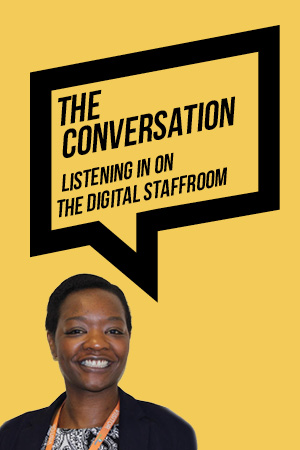As a reflective practitioner and trainer, I am always asking myself “are we doing enough?” when it comes to positively promoting equality and diversity in early years.
This question seems all the more pertinent with the renewed emphasis within Ofsted’s Common Inspection Framework on actively promoting equality and diversity and narrowing gaps in outcomes between different groups of children.
Our sector has become increasingly aware that there are some groups of children who are vulnerable in terms of their learning and development, and that we must do more to improve outcomes for those children.
Research continually tells us that by the time they are five years old, our boys are not doing as well as girls. However, the issue is not just about ‘getting it right for boys’, but considering how we can support all children to reach their full potential. If we are to do this we need to consider the implications for gender development within early years settings, and how we create gender equality as an integral part of our everyday practice.
On my journey I have read many books and articles on how boys and girls develop in the early years. However, Gender diversity and inclusion in early years’ education stands out.
What I really appreciated about the book was that the format supports a very practical approach to the process of personal and professional reflection and continual improvement.
The case studies and questions raised can effectively be used by individual practitioners, or shared at staff meetings or as part of team training sessions. There are also links to useful websites and organisations for further research, which are really useful.
Biological and socialisation theories about gender identity are explained to set the context for the challenges faced by early years settings. The use of case studies really brings the issues to life. They provide provocation for team discussions and identifying actions that will bring about positive changes in order to help settings offer outstanding practice in relation to gender diversity.
The book makes links to information about the development of relevant legislative frameworks and how they impact on personal lives. Through an examination of ways current legislative requirements underpin our work, it can be seen that in an early years setting, owners and leaders have a two-fold legal responsibility to both children and employees.
Further examination highlights the crucial role of leadership and management in developing an ethos where the unique qualities and characteristics of children, parents and staff are supported and celebrated, by starting with a vision statement and considering how this is applied in practice.
The book specifically considers our perceptions of gender roles, and the implications this has for the recruitment and retention of male practitioners.
Of particular interest to me were the case studies in chapter four which relate to both a transgender child and transgender parents. Both are emotive and thought provoking and help us to further understand the gender spectrum, and gender fluidity.
The points to consider following each case study help us to see that by challenging our own assumptions and prejudices -and by offering sensitive and supportive communication – we can work in partnership with parents in order to secure a positive impact on children’s emotional well-being and development.
Chapter five helps us to consider what good practice looks like in our day-to-day work with children. It provides examples of what adults could do to provide an anti-biased learning environment, and of what adults could provide within the environment. These include resources that positively reflect our diverse society and help to develop children’s self-esteem, and opportunities for children to make choices and develop their autonomy.
This book is ideal for anyone with an interest in issues relating to equality and diversity, and would make a useful tool to support reflection for managers and leaders. It would also provide an invaluable link between theory and practice for those undertaking early years qualifications.
Gill Medhurst is an early years trainer and consultant












Your thoughts